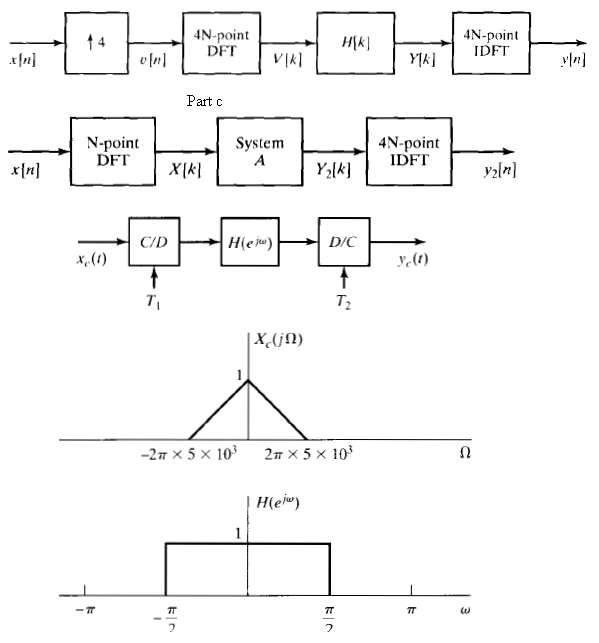In this problem, you will examine the use of the DFT to implement the filtering necessary for
Question:
In this problem, you will examine the use of the DFT to implement the filtering necessary for the discrete-time interpolation, or up sampling, of a signal. Assume that the discrete-time signal x[n] was obtained by sampling a continuous-time signal xc(1) with a sampling period T. Moreover, the continuous- time signal is appropriately band limited: i.e., Xc(j?) = 0 for |?| ? 2?/T. For this problem, we will assume that x[n] has length N; i.e., x[n] = 0 for n N ? 1, where N is even. It is not strictly possible to have a signal that is both perfectly bandlimited and of finite duration, but this is often assumed in practical systems processing finite-length signals which have very little energy outside the band |?| ? 2?/T.?
We wish to implement a 1:4 interpolation, i.e., increase the sampling rate by a factor of 4. As seen in Figure 4.24, we can perform this sampling rate conversion using a sampling rate expander followed by an appropriate low pass filter. In this chapter, we have seen that the low pass filter could be implemented using the DFT if the filter is an FIR impulse response. For this problem, assume that this filter has an impulse response h [n] that is N + 1 point long. Figure depicts such a system, where H[k] is the 4N-point DFT of the impulse response of the lowpass filter. Note that both v[n] and y[n] are 4N-point sequences.?
(a) Specify the DFT H[k] such that the system in Figure implements the desired up sampling system. Think carefully about the phase of the values of H[k].
(b) It is also possible to up sample x[n] using the system in Figure. Specify system A in the middle box so that the 4N-point signal y2[n] in this figure is the same as y[n] in Figure. Note that system A may consist of more than one operation.
(c) Is there a reason that the implementation in Figure might be preferable to Figure?

Step by Step Answer:

Discrete Time Signal Processing
ISBN: 978-0137549207
2nd Edition
Authors: Alan V. Oppenheim, Rolan W. Schafer





